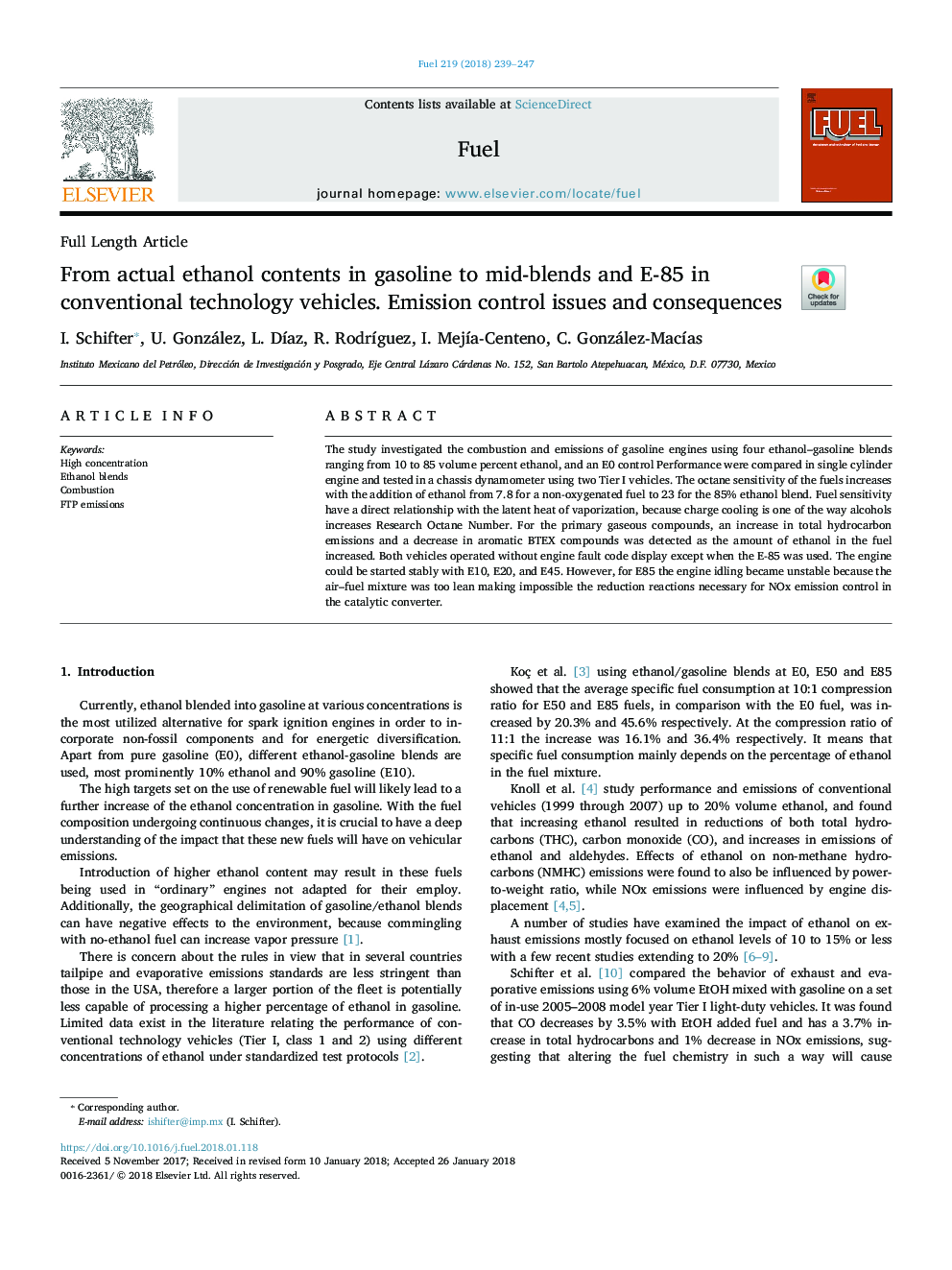| Article ID | Journal | Published Year | Pages | File Type |
|---|---|---|---|---|
| 6631833 | Fuel | 2018 | 9 Pages |
Abstract
The study investigated the combustion and emissions of gasoline engines using four ethanol-gasoline blends ranging from 10 to 85 volume percent ethanol, and an E0 control Performance were compared in single cylinder engine and tested in a chassis dynamometer using two Tier I vehicles. The octane sensitivity of the fuels increases with the addition of ethanol from 7.8 for a non-oxygenated fuel to 23 for the 85% ethanol blend. Fuel sensitivity have a direct relationship with the latent heat of vaporization, because charge cooling is one of the way alcohols increases Research Octane Number. For the primary gaseous compounds, an increase in total hydrocarbon emissions and a decrease in aromatic BTEX compounds was detected as the amount of ethanol in the fuel increased. Both vehicles operated without engine fault code display except when the E-85 was used. The engine could be started stably with E10, E20, and E45. However, for E85 the engine idling became unstable because the air-fuel mixture was too lean making impossible the reduction reactions necessary for NOx emission control in the catalytic converter.
Related Topics
Physical Sciences and Engineering
Chemical Engineering
Chemical Engineering (General)
Authors
I. Schifter, U. González, L. DÃaz, R. RodrÃguez, I. MejÃa-Centeno, C. González-MacÃas,
